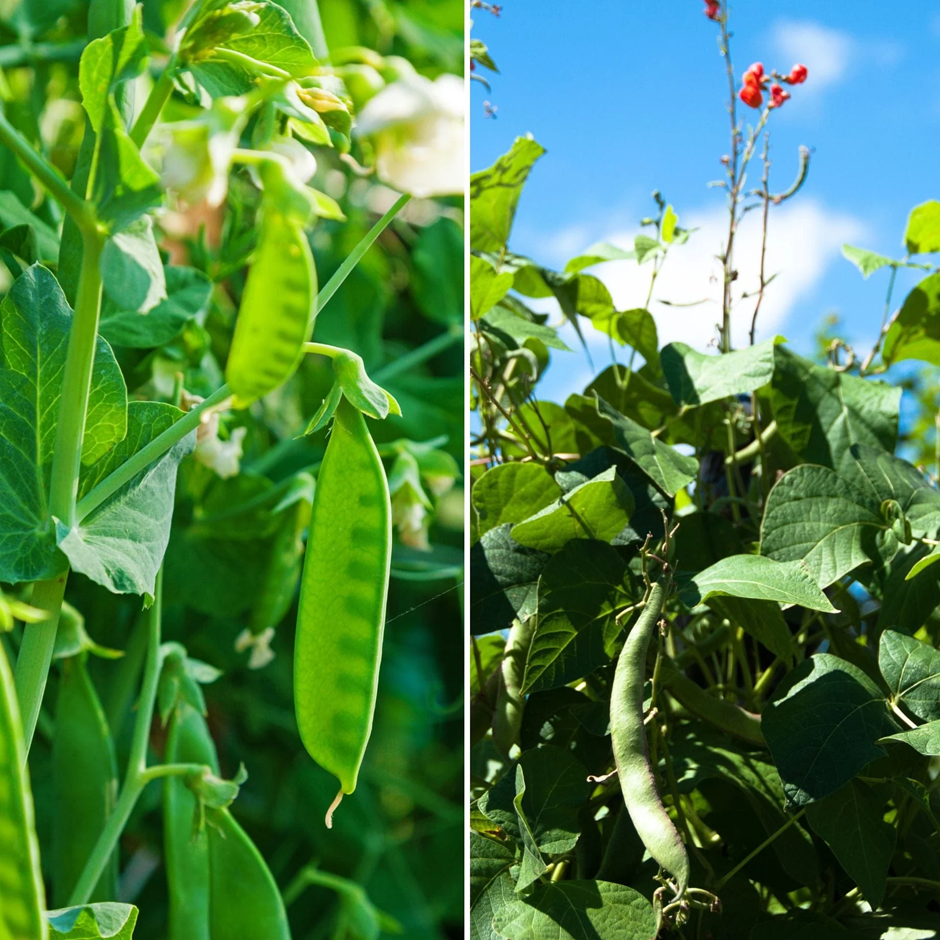Pairing beans and peas with the right neighbors sets up healthier beds and easier harvests. Legumes enrich soil through nitrogen-fixing nodules, so nearby crops grow with better support and fewer inputs. Flowers and herbs can attract beneficial insects or work as trap crops, giving room for organic pest control without harsh sprays.
This plant pairing guide zeroes in on smart beans and peas companion plants that help with trellising, shade, and groundcover while keeping pests in check. We will share clear, practical vegetable garden tips you can use in small beds or larger rows, season after season.
Understanding Beans and Peas
Beans and peas deliver two wins: tasty harvests and healthier soil. Bush and pole bean varieties grow compact or climbing, while pea plant types include garden (shelling), snap, and snow, often with vining habits that like trellises.
As nitrogen fixing plants, these legumes host rhizobia in root nodules that turn atmospheric nitrogen into a plant-ready form, feeding the bed over time. The legume gardening benefits show up in richer beds and sturdier companion rows, especially after residues are worked in around neighboring crops.
Benefits of Companion Planting for Beans and Peas
Planting supportive neighbors around beans and peas pays off fast. Flowering herbs and blooms act as pest control plants, pulling in predators and parasitoids that curb aphids and beetles, so vegetable garden yield stays steadier.
Nasturtiums can work as trap crops and marigolds attract helpful insects, reinforcing those companion planting benefits across the bed.
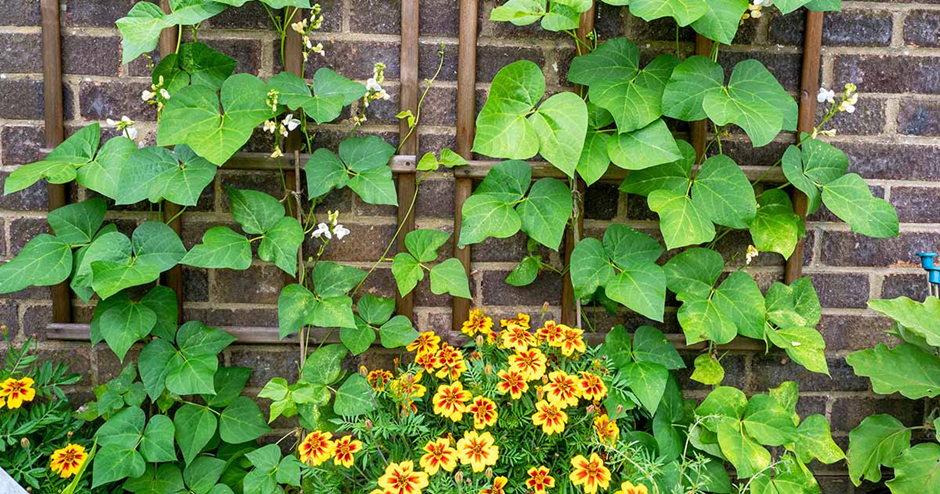
Beans and peas are self-pollinating, so gains come less from pollination and more from fewer pests and a richer habitat of beneficial insects for garden balance.
Top Companion Plants for Beans
Beans love good neighbors. Top beans companion plants include corn, cucumbers, and nasturtiums. When it comes to corn and beans planting, tall stalks act as living trellises while beans add nitrogen.
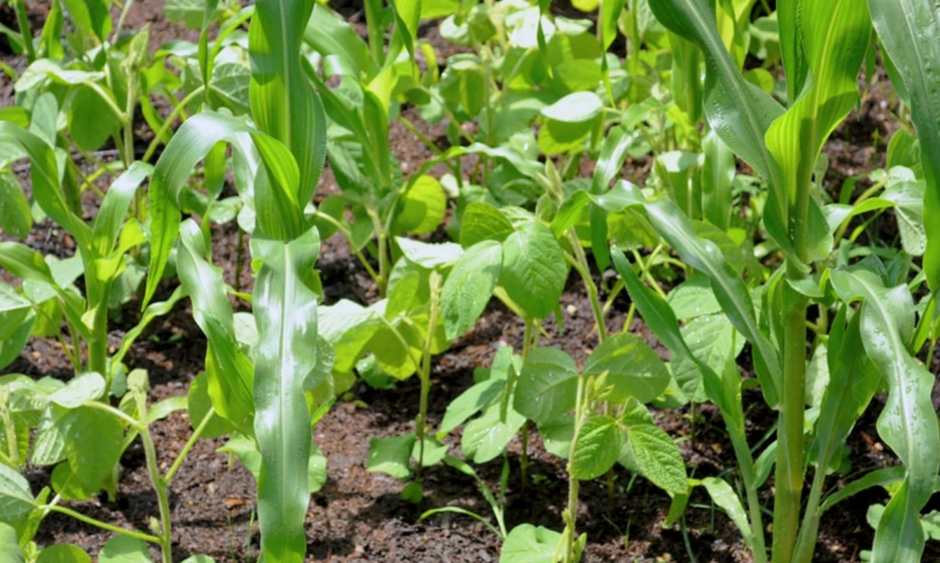
Squash or vining cover helps shade soil. Cucumbers play ground cover by sprawling between rows and also pair well with beans and corn.
For flowers, nasturtium draws pests away from crops and can deter beetles and aphids around cukes and legumes. Together, this mix ranks among the best vegetables to plant together for healthier, lower-maintenance beds.
Top Companion Plants for Peas
Peas play well with quick growers and cool-season roots, so top companion plants include radishes, carrots, and a staggered handoff to squash. Radishes loosen the top few inches with taproots, making room for young pea roots.
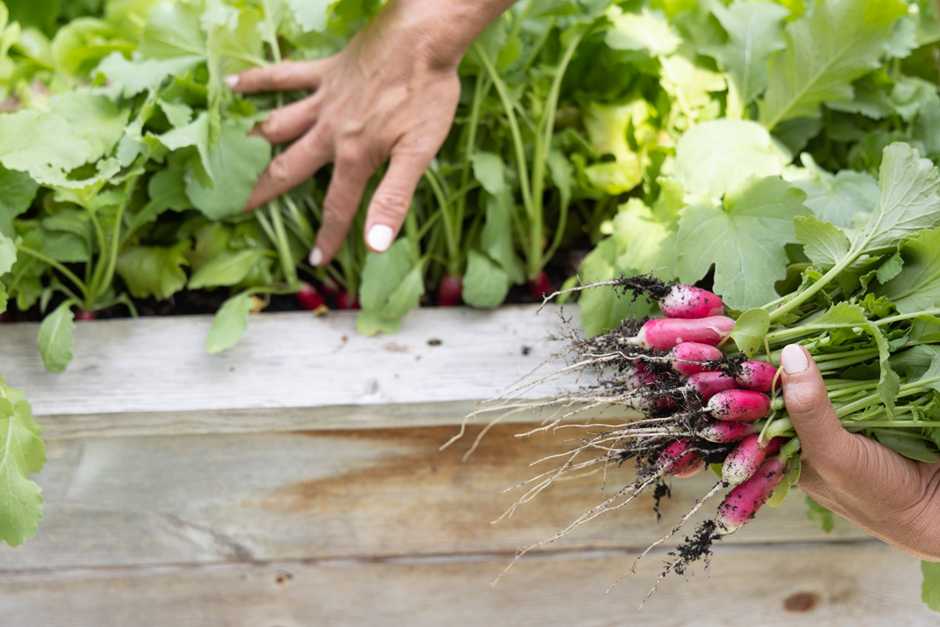
In a carrots and peas garden, legumes enrich the soil and fine carrot roots share space without crowding. For squash companion planting, let peas finish, then run squash through the bed so vines use residual fertility and cover soil. These pairings keep beds productive and peas happier.
The Role of Nitrogen Fixation in Companion Planting
Beans and peas partner with rhizobia in root nodules to fix atmospheric nitrogen, making them nitrogen fixing crops that boost bed fertility. As vines and nodules break down, the stored nitrogen returns to the soil, turning these legumes into reliable soil enrichment plants for neighbors and the next planting.
In legume companion planting, pair with heavy feeders like corn and work spent growth into the bed to reinforce the benefit. For sustainable gardening tips, inoculate seed where rhizobia are scarce and avoid high nitrogen fertilizer that can suppress fixation.
Common Mistakes to Avoid in Companion Planting
Companion planting goes wrong fast when beds are packed too tight. Companion planting mistakes show up as plants competing for light, water, and nutrients, with no gain in yield. Skip incompatible plant pairs near beans and peas, especially onions or garlic, which can hinder legume growth.

Timing matters too. Trellised beans and peas can cast shade on shorter crops, so keep tall growth to the north side of beds to protect sun lovers. Use vegetable garden planning tips like proper spacing and staggered sowing to prevent overcrowded garden issues and keep airflow strong.
Tips for Successful Companion Planting
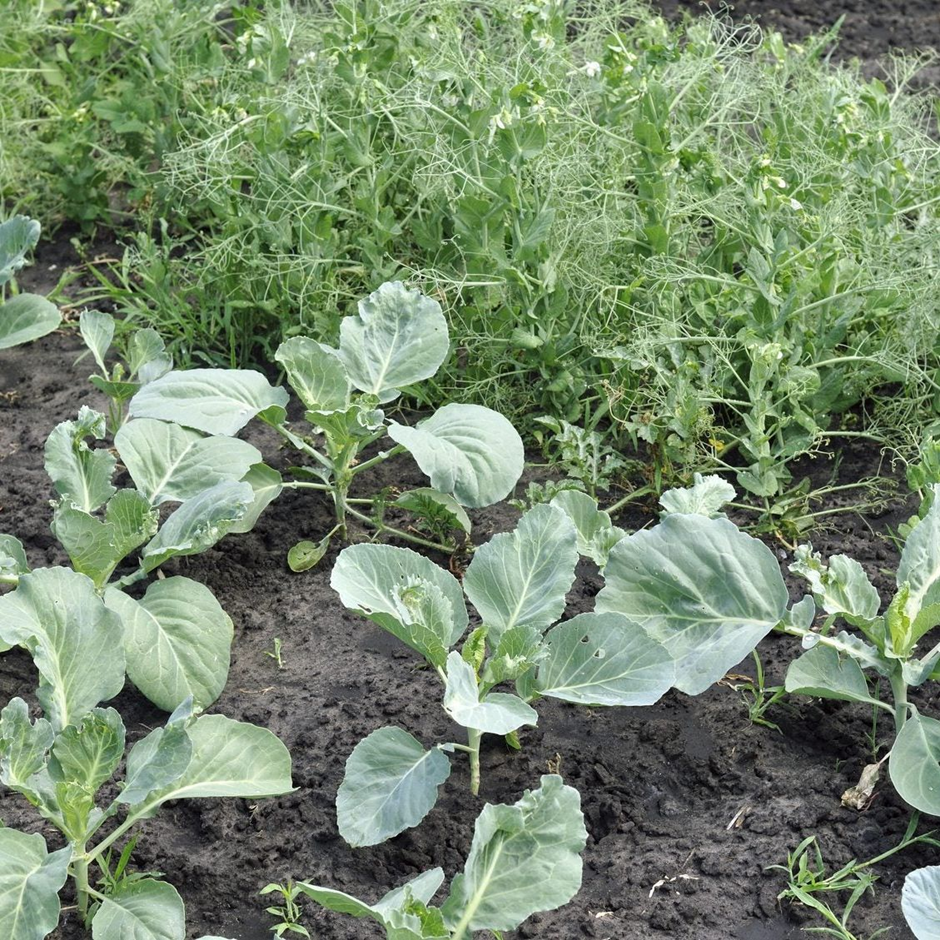
Healthy pairings grow from simple habits. Give beans and peas breathing room so light and airflow reach leaves. Good spacing helps limit disease risk. Rotate legumes each year to new beds to capture crop rotation benefits and reset pests.
Plan the season in waves: cool-season peas early, warm-season fill-ins after harvest, then a fall round as weather allows. Keep a quick notebook map to track wins. Mix flowers and herbs along rows to attract helpers and confuse pests.
Seasonal Considerations for Planting
Peas thrive in cool soil as soon as ground is workable, so tuck them in early and pair with spinach, lettuce, and carrots that like the same chill. Beans prefer warm soil after the last frost, so plant them later with corn or squash for summer beds.
Use this seasonal planting guide to group crops by temperature needs and improve vegetable garden timing. For practical spring gardening tips, set trellises for peas first, then rotate to beans as the weather warms.
Conclusion: Grow a Thriving Garden with Companion Plants
Let beans and peas work with helpful neighbors. Legumes enrich soil through root nodules that fix nitrogen, supporting nearby crops and healthier beds. Interplant in patterns where sturdy supports and living cover keep beds productive and tidy.
Use a companion planting guide to map pairings, then fold in practical beans and peas garden tips like smart spacing, light mulching, and rotation for sustainable vegetable gardening that builds soil over time. Keep pairings simple and repeat what works for a thriving home garden.
Share your favorite bean and pea companion layout in the comments below!

